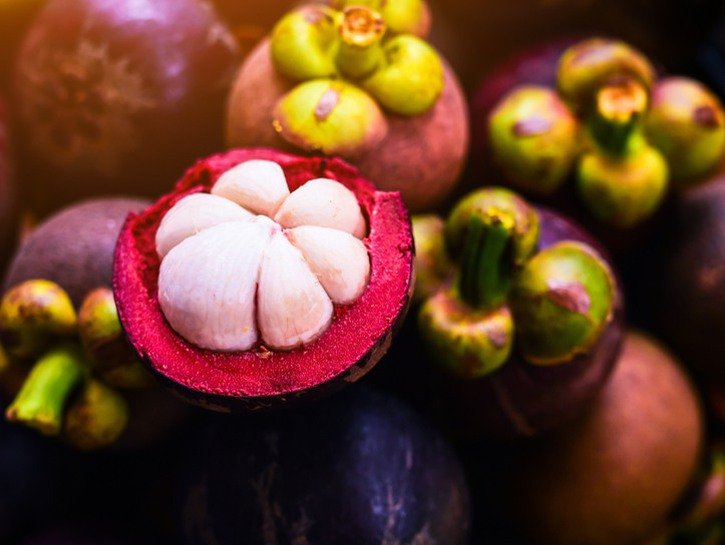What Is A Mangosteen?
Despite having a name similar to the mangoes you often see at the grocery store, mangosteens are a truly unique food. Native to southeast Asia, the mangosteen is small fruit with a reddish-purple inedible skin on the outside and pure white flesh on the inside that is said to be sweet and juicy, like a peach or tangerine. Mangosteens are also known as mangosteen fruits, mangostans, and xangoes.
In it’s native region, the mangosteen is considered to be the “Queen of Fruits” because it is highly prized during the harvest season and is the most expensive fruit in Thai markets.
Mangosteens In America
If you’re wondering why you’re just now hearing about mangosteens, you’re probably not alone. The exotic fruit was banned in the United States until 2007 because U.S. officials feared importing the fruit from Thailand would bring Asian fruit flies to America. Since Mangosteens became legal for purchase in The States, the fruit has become sought after for it’s many benefits (more on that later).
There is a catch, however, if you’re looking to add mangosteens to your pantry: though they are now legal for purchase in the United States, you might still have a hard time finding them at your local grocery store or market. The fruit can only be grown in tropical climates, like Thailand, so it has to be imported and since it’s a highly perishable food since it doesn’t ripen after being picked, it’s not really worth the trouble for most stores to keep it in stock. If you really want to get your hands on fresh mangosteens, you can always order them online, otherwise you’ll have to settle for canned or freeze-dried.

Health Benefits Of Mangosteens
The USDA reported that one cup of canned mangosteen contains no cholesterol or trans fat. One cup, drained, is a great source of vitamin C, thiamin, riboflavin, niacin, folate, and vitamin A. Mangosteens are also a good source for calcium, magnesium, potassium, and fiber.
One of the reasons why mangosteens are steadily gaining popularity is because of all the potential health benefits that comes with consuming them. The purple outer rind of the mangosteen, also known as the pericarp, has been used for medicinal purposes for centuries. It has been used to holistically treat conditions like dysentery, infections, eczema, diarrhea, urinary disorders, and more.
Not only are mangosteens used to alleviate various ailments, but they also contain an antioxidant called xanthone, which can help cancer patients inhibit bacteria and tumor cell growth as well as prevent damages to DNA by reducing radical activity. Research also suggests that xanthones help strengthen the immune system, aid intestinal health, and give people more energy. Because the medicinal benefits of mangosteens haven’t been officially evaluated by the FDA, it’s important that you discuss with your doctor if you should take a mangosteen supplement for any specific health reason.

How To Eat A Mangosteen
If you happen to get your hands on a mangosteen, it’s important you know how to prepare it.
In order to release the inside fruit from the rind, cut a circle into the skin around the stalk and lift it off. By doing this, you should be able see the white flesh inside. The flesh is generally divided into about eight segments.
The white segments can be removed to be eaten piece by piece or scooped out with a spoon. It’s important to note that if your mangosteen has seeds that you must remove them because the seeds are indigestible.
Mangosteen has a sweet tart and floral taste and is usually served by itself, but can be used in a fruit salad. Mangosteens can also be juiced and used in citrus jellies or savory Thai recipes to add a sweet note to the dish.
